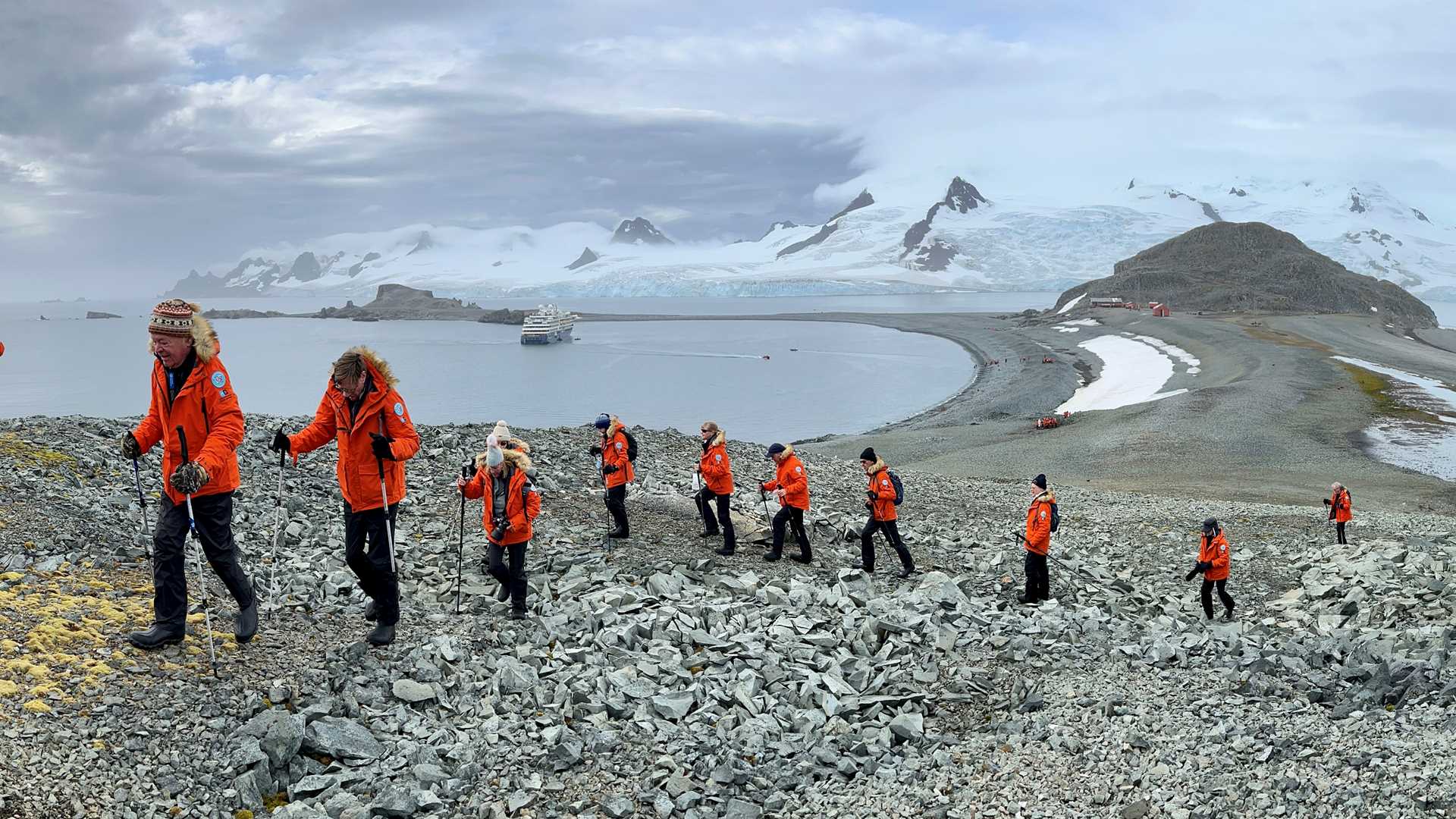This morning we awoke in a new world. One of fog, looming basaltic cliffs, and…penguins! We made it to Antarctica!
The fog cleared somewhat as we landed on Half Moon Island, and we were treated to views of vast glaciers and impressive rock towers. The views only got more impressive as the long hikers gained elevation and could look down upon our fine ship. We also got to experience the sights, sounds, and smells of our first penguin colony. Half Moon Island is home to a colony of chinstrap penguins.
In the afternoon, we went ashore on Barrientos Island, where colonies of both chinstrap and gentoo penguins live. We spent a long time on the beach, enjoying the antics of the gentoo chicks and watching with bated breath as a leopard seal prowled the shallows. What a first day in Antarctica!







